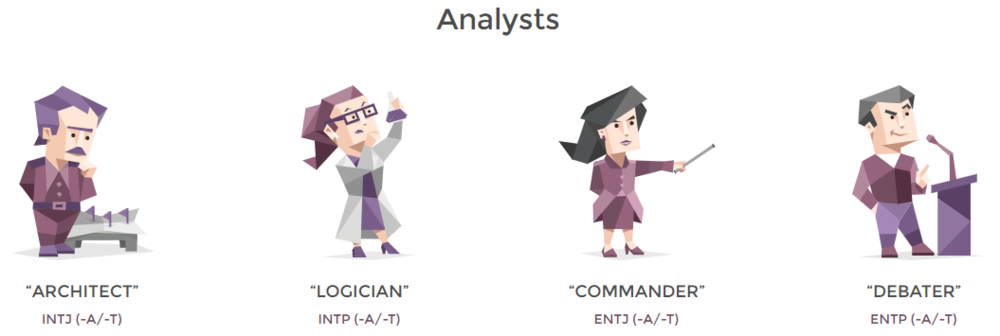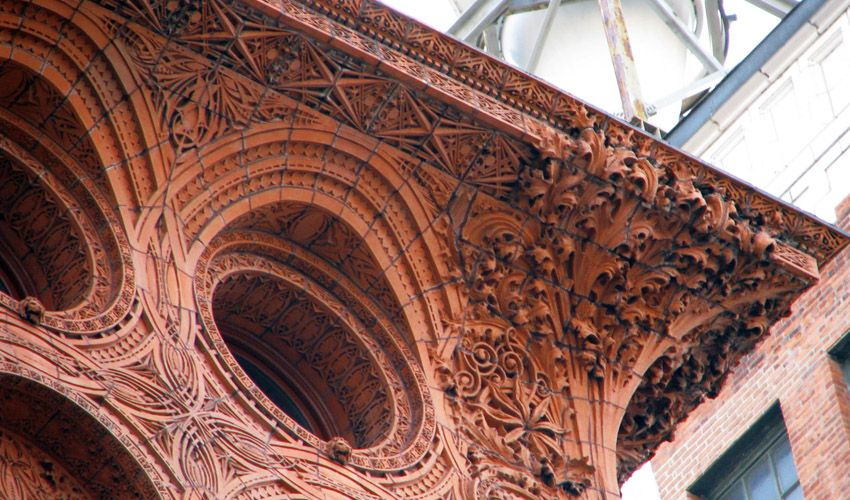4 min read
Emotional Vs Rational CPD: Getting Your Message Across.
![]() Paul Iddon
:
22-Sep-2021 19:15:00
Paul Iddon
:
22-Sep-2021 19:15:00

Architects walk the tightrope between emotion and rationality, and understanding this idea is how you get your product specified.
A post written by architect and friend of Insynth, Paul Iddon ARB RIBA
Are architects’ dreamers or feet on the ground types? The inconvenient answer is both.
This matters a great deal when the goal is to get your product specified. Making the connection between the dream and the real is the best route to specification. This may sound esoteric, but it is actually the way architects work. And it’s not just architects that think this way. For Peter Gabriel fans, this idea was neatly summed up in his song ‘Mercy Street’:
“Looking down on empty streets, all she can see
Are the dreams all made solid
Are the dreams made real
All of the buildings, all of the cars
Were once just a dream
In somebody's head”
A study undertaken by researchers in the USA was published in the American Institute of Architect’s Journal a few years back. It was an admittedly small-scale study of the Myers Briggs personality inventories of a group of about 150 architects.
Before we go further, we must acknowledge that ‘personality tests’ are not very scientific. There is a body of thought that they are so inaccurate to be barely worth undertaking. But that would be a mistake for the very reason I put in the title of this piece. Humans seldom work purely through rationality alone. We need something else – a kind of magic, to succeed in life. More on this later…In the study, it was found that two personality types dominated, INTJ and ENTJ. These were almost thirteen times higher than found in the general population. Coincidentally (or is it?), the INTJ type is called ‘The Architect’ in the main website for Myers Briggs indicator, 16personalities.com.
According to the website, it may seem a bit strange and reductive, but over 450 million tests have been taken. And let’s face it, people read horoscopes all the time. Back to emotion vs rationality again. If, like myself, you believe that your decisions are logical and consistent, how many times have you either touched wood this past 18 months or saluted a solitary Magpie?
Thought so… Me too.

©16personalities.com
‘The Architect’ INTJ (MBI definition) reads “imaginative and strategic thinkers, with a plan for everything’.
It goes on to state that “For Architects, rationality is king. But emotional context often matters more than people with this personality type care to admit. Architects can get impatient with anyone who seems to value feelings more than facts”.
Architects (ARB qualified ones) often look for original ideas and solutions off the beaten track. This makes sense because otherwise, there would be no originality. They interpret the requirements of the brief through a filter of imagination. Architecture, as discussed in a recent blog here is also about delight. This is almost impossible to describe succinctly and certainly is not a result of deductive processes. It is about style, panache, wonder and awe, to name a few.
I built enough buildings in my time in practice to understand the rationale of construction. It may be surprising to many that a very high percentage of claims against architects involve water ingress. You would think that the lessons of billions of buildings in a temperate climate would have perfected every little detail by now.
To detail a roof or a wall to keep water away or out can be surprisingly tricky; on taller buildings, water can flow uphill due to air pressure. But that is not the case. We no longer use wide cornices at the top of buildings or large overhanging eaves on houses that keep the water away from the building. This is a matter of style – Modern Movement Style to be precise, with its clean lines and flush detailing. We have fantastic technology that would have thrilled the Victorians. Still, architects of that era would be puzzled nowadays that we seem to have dismissed the lessons of precedent and history.

Louis Sullivan - Prudential Building, Buffalo, New York 1894.
In the pursuit of a new architectural language, we lost something, the intuitive understanding of hundreds of years of trial and error in robustness. So, it isn’t always logical or rational to design a building in the 21st century.
Take CPD, for example, although the same applies to all marketing material. I write CPDs myself and have seen thousands in my time ‘on the tools’ and hundreds more in my role as Vice President of Manchester Society of Architects and host of our CPD programme. The one thing I have learned, being on both sides of the process, is that they are often written and presented almost scientifically, unemotionally. They lay out the necessary content rationally that covers building regulations, fire safety, cost, etc. But all too often they fail to inspire. To put the product in a context with which architects can connect and feel. The same goes for other marketing and sales materials.
As you build your marketing strategy and create content/assets, it would be wise to stop and ask a question. What comes first, form or function? Do architects design buildings from a library of details or a search for the correct expression for a particular project?
The answer, frustratingly, can be both. Architects with experience will hold both in their head as they imagine. Keeping an overview of both ends of the scale. It’s the design equivalent of playing the piano, both hands doing different things simultaneously.
The same approach must be considered when creating a marketing campaign aimed at specifiers. You must work at both ends of the scale at the same time. To assess the emotional, the inspiring and the magical whilst laying out the details of the product and how it works. For example, case studies are a favourite of architects and are in their top four useful information from manufacturers. Try and show the result imagery alongside working details and production information.

And that is the secret on how to communicate with architects. To walk the tightrope between emotion and rationality, between the dream and the real.
Paul Iddon ARB RIBA.
About Insynth
At Insynth we deliver a predictable flow of leads, customers, and specifications for building product brands through our inbound marketing approach, proven to reach a technically demanding audience.
We use the latest marketing techniques such as construction inbound marketing, to equip building product companies to grow sustainability in this era of digital transformation.
As the only HubSpot certified agency to major in construction marketing. We have a proven formula of bringing a variety of functionalities together including CRM Implementation, Web Design, Sales Automation, SEO, and Email Marketing to achieve your ultimate aim: Growing your business and gaining new specifiers and customers.
Book A Free Consultation Today

